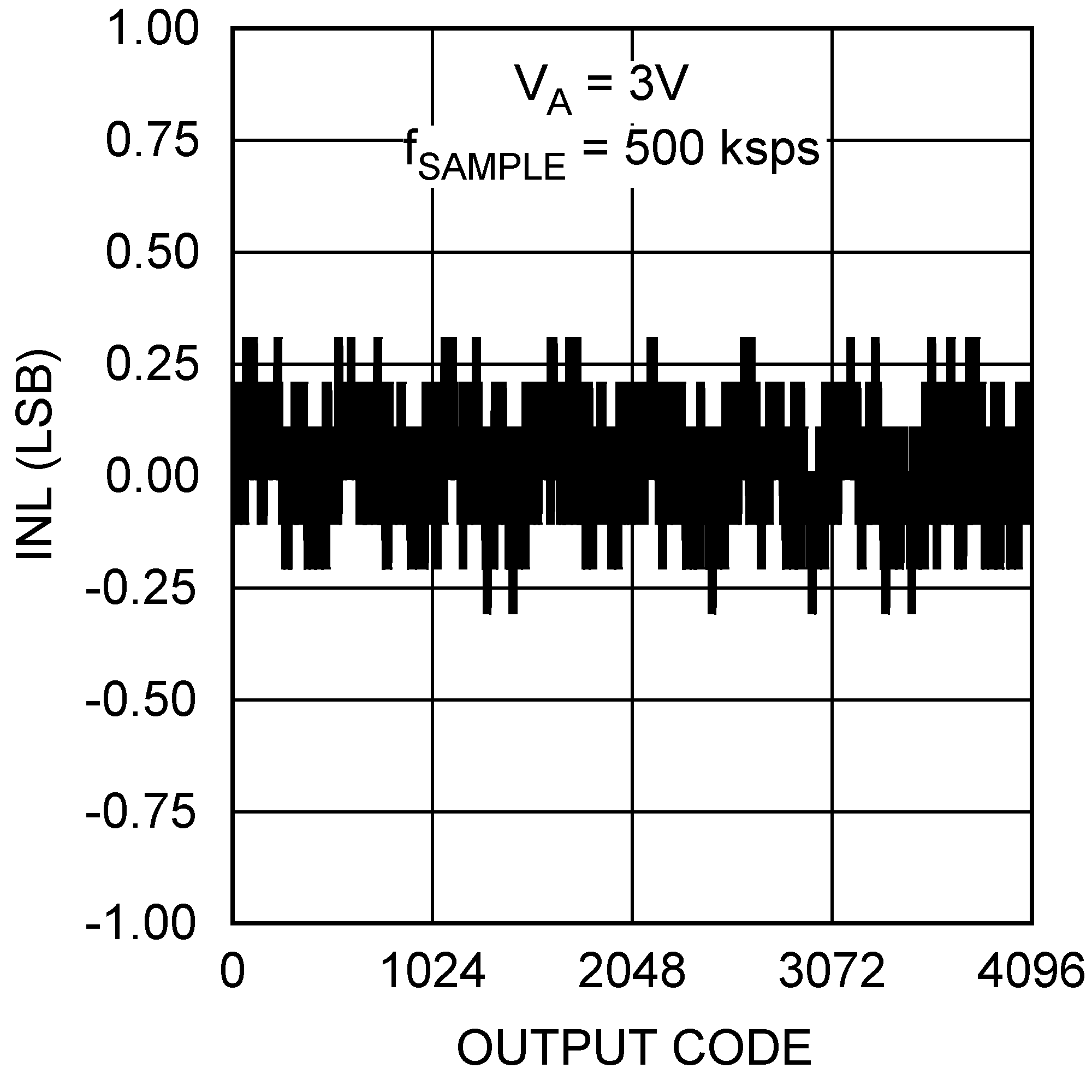SNAS304H January 2006 – April 2016 ADC121S101 , ADC121S101-Q1
PRODUCTION DATA.
- 1 Features
- 2 Applications
- 3 Description
- 4 Revision History
- 5 Device Comparison Table
- 6 Pin Configuration and Functions
- 7 Specifications
- 8 Detailed Description
- 9 Application and Implementation
- 10Power Supply Recommendations
- 11Layout
- 12Device and Documentation Support
- 13Mechanical, Packaging, and Orderable Information
Package Options
Mechanical Data (Package|Pins)
- DBV|6
Thermal pad, mechanical data (Package|Pins)
Orderable Information
1 Features
2 Applications
- Portable Systems
- Remote Data Acquisition
- Instrumentation and Control Systems
- Automotive
3 Description
The ADC121S101 is a low-power, single-channel CMOS 12-bit analog-to-digital converter with a high-speed serial interface. Unlike the conventional practice of specifying performance at a single sample rate only, the ADC121S101 is fully specified over a sample rate range of 500 ksps to 1 Msps. The converter is based upon a successive-approximation register architecture with an internal track-and-hold circuit.
The output serial data is straight binary, and is compatible with several standards, such as SPI™, QSPI™, MICROWIRE, and many common DSP serial interfaces.
The ADC121S101 operates with a single supply with a range from 2.7 V to 5.25 V. Normal power consumption using a 3 V or 5 V supply is 2 mW and 10 mW, respectively. The power-down feature reduces the power consumption to as low as 2.6 µW using a 5-V supply.
The ADC121S101 is packaged in 6-pin WSON and SOT-23 packages. Operation over the temperature range of −40°C to 125°C is specified.
Device Information(1)
| PART NUMBER | PACKAGE | BODY SIZE (NOM) |
|---|---|---|
| ADC121S101 | WSON (6) | 2.50 mm × 2.20 mm |
| SOT-23 (6) | 2.90 mm × 1.60 mm |
- For all available packages, see the orderable addendum at the end of the data sheet.
INL, fSCLK = 10 MHz
